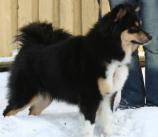
This is a placeholder text
Group text
by ggturner on 25 October 2013 - 12:10
by EuroShepherd on 25 October 2013 - 15:10
by Ibrahim on 25 October 2013 - 16:10
Honestly speaking, that is just not possible and can not be the fact, it is a mistake in the study somewhere.
Ibrahim
by susie on 25 October 2013 - 16:10
by mollyandjack on 25 October 2013 - 16:10
by Mindhunt on 25 October 2013 - 18:10
Chimerism and tetragametic chimerism in humans: implications in autoimmunity, allorecognition and tolerance.
Yunis EJ, Zuniga J, Romero V, Yunis EJ.
Source
Department of Cancer Immunology and AIDS, Dana Farber Cancer Institute, 44 Binney St., Boston, MA 02115, USA. edmond_yunis@dfci.harvard.edu
by susie on 25 October 2013 - 19:10
I don´t believe it.
by guddu on 25 October 2013 - 22:10
by ggturner on 26 October 2013 - 09:10
http://news.nationalgeographic.com/news/2005/01/0125_050125_chimeras.html
by Hundmutter on 26 October 2013 - 11:10
the mother can be incorporated by the second growing baby / puppies.
And Y chromosomes come from the actual father of an embryo, so finding
them in the '2nd batch' isn't spectacular; only if there is proof positive
that those are some sort of hangover ones from the 1st father.
Anyway, wouldn't we be talking about such tiny low numbers of cells that
visual or interpretable genetic effects would be inconsequential ?
Contact information Disclaimer Privacy Statement Copyright Information Terms of Service Cookie policy ↑ Back to top





